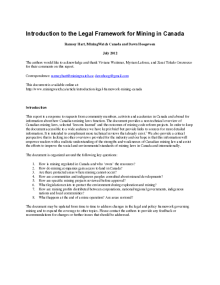Corruption, Murder and Canadian Mining in Mexico: The Case of Blackfire Exploration and the Canadian Embassy
Documents released from the Canadian Department of Foreign Affairs and International Trade (DFAIT) under an access to information request raise serious concerns about the conduct of the Canadian Embassy in Mexico. Throughout a conflict involving Blackfire Exploration’s mining activities in the municipality of Chicomuselo, Chiapas that saw an activist shot and ultimately triggered an RCMP investigation over corruption, it appears the Embassy provided instrumental and unconscionable support to the operations of a Canadian mining company in Mexico.



















